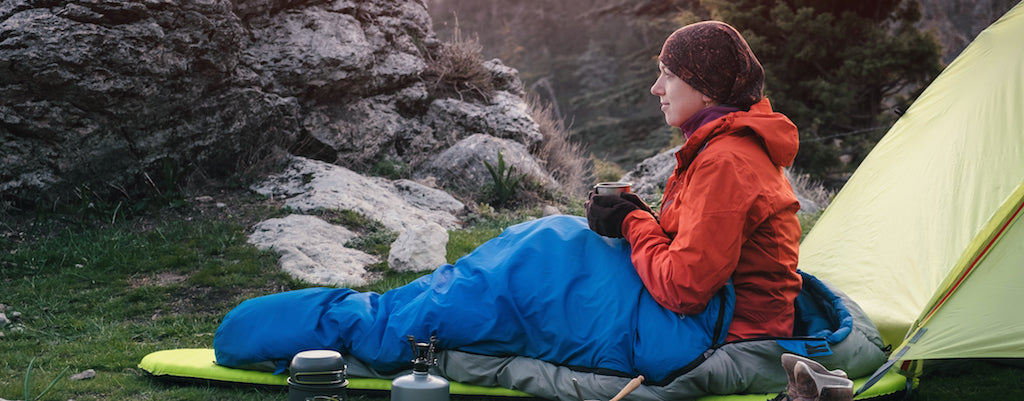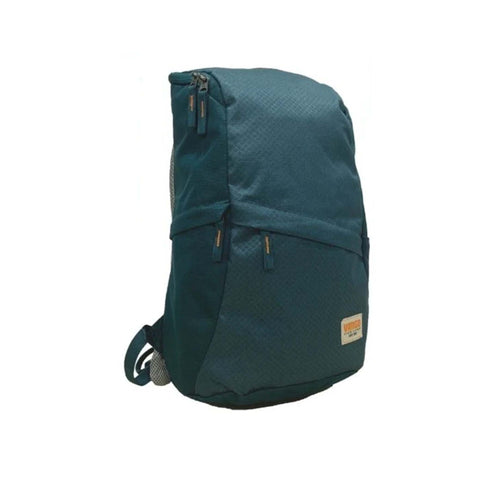On the last night of a recent cycle tour of Sicily, my 10-year-old Therm-a-rest Pro-Lite suffered a mortal wound from an unnaturally spiteful thorn. Admittedly, I was using the sleeping mat as a seat, to keep the nasty thorns away from mess, so I could have seen that coming.
When I got back home, I set about looking for a replacement and was a little overwhelmed by the choice. But, having done my research, I decided to write a little guide to the things to think about when choosing a new roll mat. There’s a whole range of different sizes, shapes, materials on the market… so what should you be looking for?
Warmth
Half the job of a roll mat is to keep you warm at night, to stop all your precious body heat seeping into the cold ground. Not all mattresses do this equally well. Thin mattresses tend not to be as warm as thicker ones. However, some have special reflective layers to reflect heat back towards your body – like the super warm NeoAir Xtherm.
Comfort
Comfort follows a simple rule of thumb: thicker mattresses tend to be more comfortable than thin mattresses. If you sleep on your front or back the thickness may not matter so much, as your weight is spread around the whole mattress. But for side sleepers, a thin mattress can be a bit bruising after a few nights.
Ease-of-use
Folding out a piece of foam is a lot easier than blowing up an air mattress. If you’re moving each day and setting up camp again each night, having something that takes a long time to get ready might not be the best idea, especially if you’re in a spot where you’ll be bothered by midges and/or mosquitoes.
Pack size and weight
If you’re going to carry your mat in your rucksack (rather than throw it in the back of a van), then you’ll want to think about the weight and size of your mat. Generally speaking, this is what you pay for in a sleeping mat. You’ll have to think about how you’ll be carrying it as well as the weight, as foam mats are light but not small - you'll probably have to attach them to the outside of your rucksack.
Shape
All Therm-a-Rest mattresses come in a variety of sizes and shapes. The two basic shapes are mummy or square. Mummy mattresses are cut away to save weight and space, you can also slip them inside a hammock if needs be – the downside is that if you roll over a lot you’re likely to roll right off the side of the mattress. Square mattresses are much bigger and have room to move around, so great if you’re a mobile sleeper.
Camping mattresses also come in a variety of lengths, so make sure you get one that’s long enough for you (but not too long). Lots of mattresses also come in extra short, just long enough for your torso. The idea is you don’t tend to lose a lot of warmth from your legs, so if you’re aiming for weight-saving over comfort this is a great way shave off a few ounces.
With the basics covered, here are some reviews of three great Therm-a-Rest sleeping mats. I’ve picked them to exemplify the advantages of each type of mattress: closed cell (foam), air mattresses and self-inflating.
Therm-a-Rest Ridge Rest Classic
A closed cell mattress (fancy term for foam).
Foam camping mattress have been around for donkey’s years and while not the comfiest or the warmest they do have their advantages, so much so that Therm-a-rest still haven’t given up making them.
Pros:
- unpuncturable (if that's a word!) the Ridge Rest can deal with any amount of rocks or thorns you throw at it and will never let you down in the middle of the night…
- easiest type mat to use, simply roll it out – It’s so quick you can use it as something to sit on mid hike.
- very light –the Ridge Rest classic comes in at mere 400g
- far and away the cheapest option.
Cons:
- not the warmest, or comfiest, and a bit bulky. Nevertheless, a lot of hard-core winter campers choose to use a foam mattress underneath an air mat as it helps trap the heat lost to the ground. It also means you don’t have to worry about pitching on thorny or rocky ground that might damage a super lightweight air mattress.
An air mattress
Modern, lightweight: the air-mattress has revolutionized how comfy camping can be, ensuring you get a good night’s sleep wherever you are. The Therm-a-Rest NeoAir Xlite is the bees knees and has won numerous industry prizes. Wherever you find hard-core adventurers you will undoubtedly see the friendly yellow of an Xlite being inflated before bed time.
Pros:
- incredibly small and light – the NeoAir Xlite packs down to about the size of a one litre bottle while still managing to be comfier and warmer than its foam brothers
- very warm
- very comfy, the extra thickness means the Xlite is the perfect for side sleepers.
Seems like the perfect solution no? Well there are some things to consider:
- you need to inflate air mattresses, which can be a bit of a faff at the end of a long day’s adventuring. Alternatively, you can bring an extra bit of equipment with you to make life easier – such as the battery powered pump from Therm-a-Rest or the lightweight dry bag pump.
- air mattresses make more noise than foam ones, depending on how deep a sleeper you are and how much you toss and turn this can be a problem.
- these mattresses rely on being full of air and once punctured are entirely useless – Therm-a-Rest do include emergency patch kits with all their mattresses, but you still have to be careful with the NeoAir Xlite as the lightweight fabric isn’t the toughest thing in the world.
- sadly, the magic trifecta of comfort, warmth and super-lightweightness doesn’t come cheap, while there are cheaper options out there all of us here at Outdoor People agree that the NeoAir Xlite is worth it.
Special mention: If you’re looking for the comfort and warmth of the Xlite but are not fussed about the weight or pack down size (perhaps you’re just car camping) - check out the Therm-a-Rest Base Camp which is bulkier but significantly cheaper than the Xlite.
A self-inflating mattress
Perhaps the ideal compromise between comfort and ease-of-use, self-inflating mattresses are what made Therm-a-Rest’s name back in the day. To inflate you just open the valve and as the foam inside expands it draws in air. It’s nowhere near as packable as the modern air mattress, but undeniably a step up from a foam pad.
Pros:
- very easy to set up
- if the mattress is punctured while you’re out and about, there’s still a piece of foam inside to lie on.
- warmer, comfier and more packable than a foam mattress.
Cons:
- not as warm as comfy or as packable as the Xlite or other lightweight air mattresses.
I hope this quick walk through gives you a good idea what to look for in a camping mattresses and helps you get a great night’s sleep in the woods.
Sleep well!



